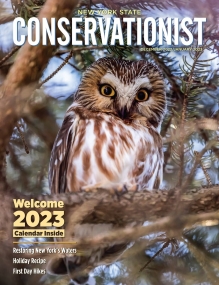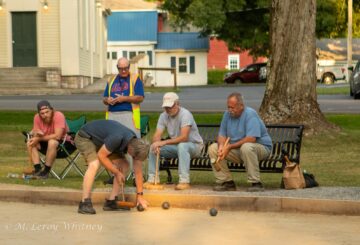Ideas for readers, star gazers, storm watchers, and nature lovers this season!
By Bob Confer
Last year around this time, this column had an installment looking at what you could get the nature lover in your family for Christmas. It discussed some of my favorite field guides.
I plan on making a Christmas article an annual occurrence, throwing some alternative ideas out there for you because sometimes it seems so incredibly tough to figure out what to give your loved ones, which adds some unneeded stress to the holiday season which is really supposed to be anything but stressful.
For this year, I offer you these suggestions…
Conservationist magazine
Published six times a year, Conservationist is a New York State-focused glossy magazine that is packed with informative articles and great photography. The magazine is put out by the Department of Environmental Conservation .
The Conservationist covers a broad range of environmental and nature topics. A typical issue highlights a destination (for nature watching, hiking, hunting or fishing) and a handful of species of animals and plants while supporting an always-interesting mailbag. Most issues also contain a few pages written for children that can be easily pulled out and shared with them.
As an example of the breadth of material, the October/November issue featured articles about revitalizing New York’s industrial past, creating new conservationists through turkey hunting, how to pick the perfect hunting dog and biological monitoring in the Hudson and Mohawk Rivers.
You can order a gift subscription at the NYSDEC’s website (http://www.dec.ny.gov/news/conservationist-magazine) for a holiday special of just $6 for one year. That’s a steal for a magazine that is consistently excellent from cover to cover!
Planisphere
Everybody loves looking at the stars, especially when there is an astronomical event underway like a meteor shower or a comet that is visible to the naked eye. But, for those unfamiliar with the details of the nighttime sky (like the locations of constellations and major stars), it can sometime be difficult to know where exactly to look. Consider the Persieds meteor shower in August when local newscasts tell you to watch the area near the constellation Perseus. Where is that exactly? With a planisphere you can find it quite easily.
A planisphere is a circular tool comprised of two discs that act as a map of the nighttime sky. You place the planisphere over your head and adjust one of the discs for the date and time (because the layout of the sky changes by the hour and by the day). With it, you can then navigate your way through the heavens like an expert.

A quick search of Amazon or Google will find a variety of planispheres, most with a price tag between $8 and $20. When shopping you have to be specific to the latitude or the tool will be useless (not everyone on this Earth sees the same sky). The latitude of Wellsville is 42 degrees north. Planispheres are effective for plus or minus 5 degrees. So, if you get one that’s rated for anywhere from 38 to 45 degrees you’ll be fine. You might see some that aren’t specific to the degree and say “40 to 50 degrees,” which is fine for this area because that’s a 45-degree planisphere.
Some might wonder why someone would want a planisphere when apps are available for smartphones that do the same. I say go old school for the fact that every time you turn on your phone the brightness then requires your eyes to readjust to the darkness which can sometimes take 15 to 20 minutes. That’s time lost best appreciating the awesomeness of Allegany County’s dark skies.
To help read the planisphere, also consider buying a small flashlight that has a red bulb. Red doesn’t impact your night vision.
Rain gauge
A rain gauge?
Who would want a rain gauge?
You’d be surprised.
When we get socked by big storms, a lot of nature watchers get curious about how much rain we got, especially when totals can vary so much across Western New York. Plus, many of those folks are also gardeners and they might be curious as to how their garden or landscaping has fared. There’s also a sense of pride to be taken on social media when someone says he got a half inch of rain and you counter with “oh, yeah? My rain gauge says we got an inch and a quarter!
Rain gauges are cheap ($6 to $15) and can be found at any local hardware store and their small size lends them to being excellent stocking stuffers.






